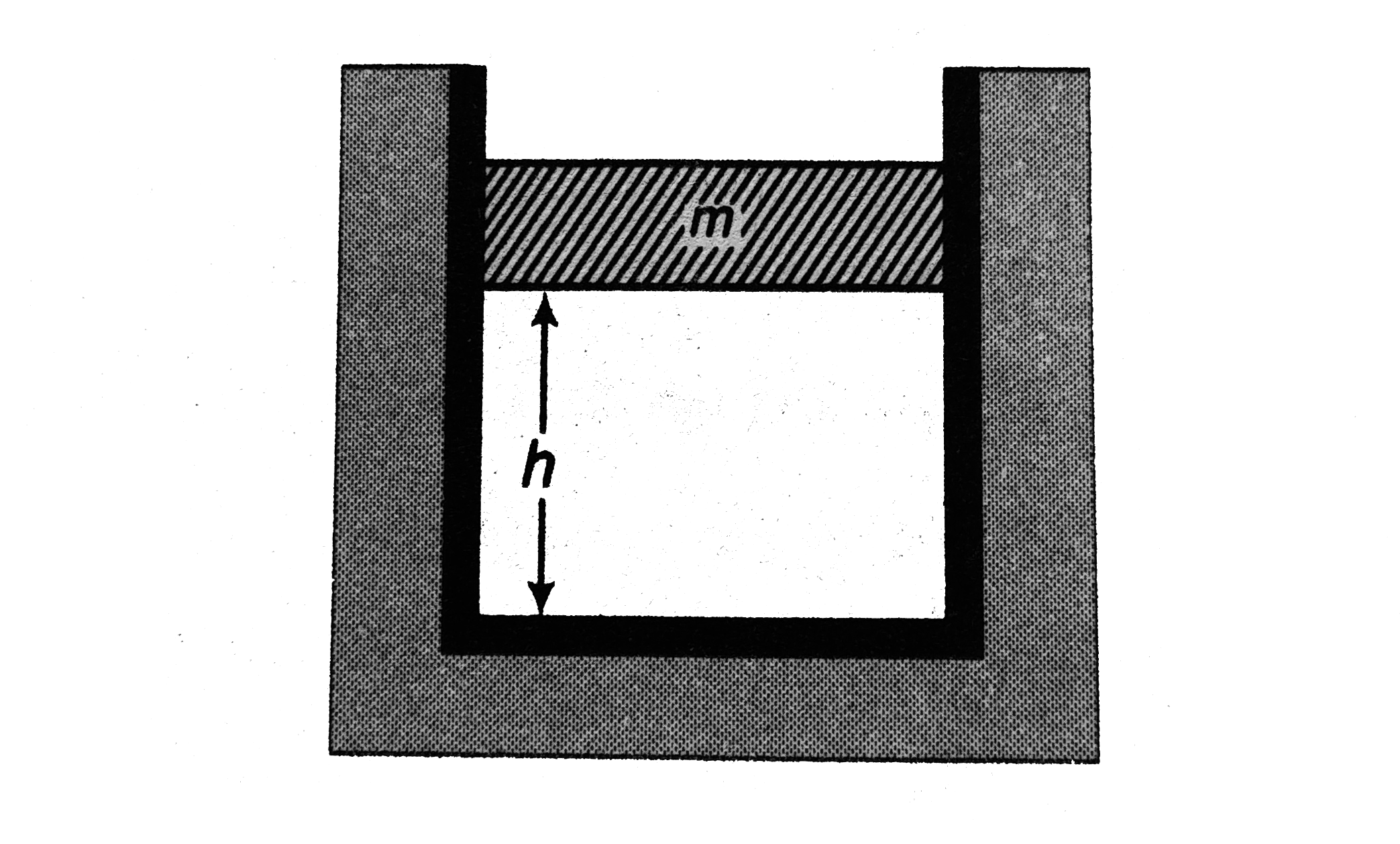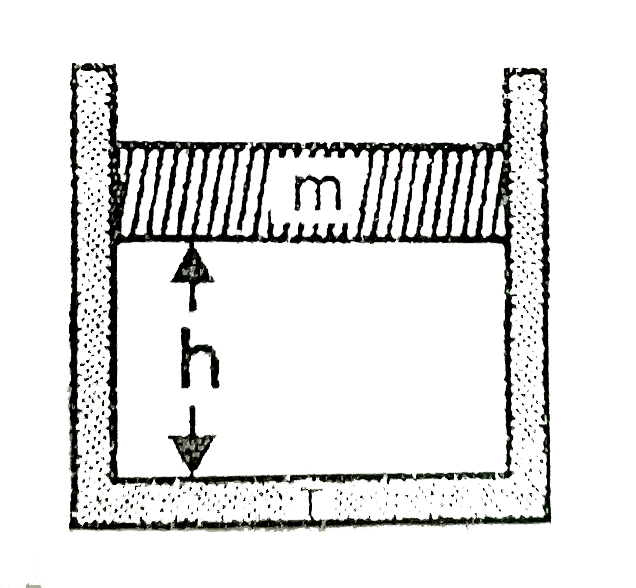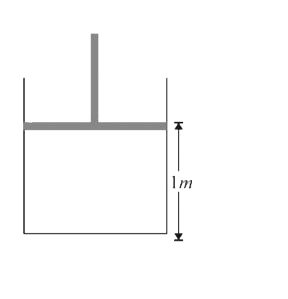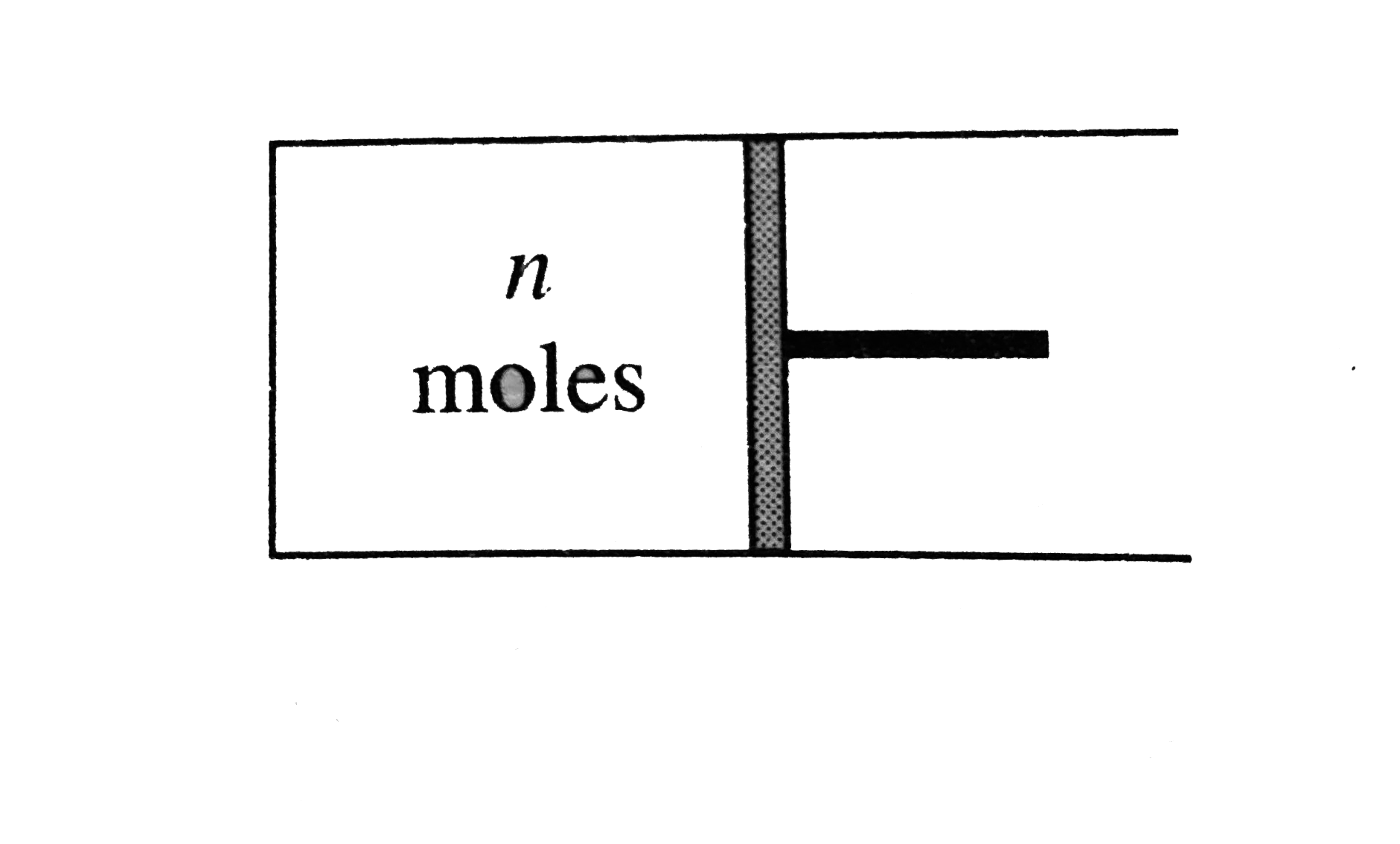A cylinder whose inside diameter is 4.00cm contains air compressed by a piston of mass m=13.0kg which can slide freely in the cylinder. The entire arrangement is immersed in a water bath temperature can be controlled. The system is initially in equilibrium at temperature ti=20∘C. The initial height of the piston above the bottom of the cylinder is hi=4.00cm. The temperature of the water bath is gradually increased to afinal temperature tf=100∘C. Calculate the final height hf of the piston.
 .
.
The correct Answer is:C
p=constant
∴V∝T
or h∝T
∴hfTf=hiTihi
or hf=(TfTi)hi
= (273+100273+20)(4)=5.09cm.
Topper's Solved these Questions
- BOOK - DC PANDEYCHAPTER - THERMOMETRY,THERMAL EXPANSION & KINETIC THEORY OF GASESEXERCISE - Level 2 Single Correct12videos
THERMOMETRY,THERMAL EXPANSION & KINETIC THEORY OF GASES
- BOOK - DC PANDEYCHAPTER - THERMOMETRY,THERMAL EXPANSION & KINETIC THEORY OF GASESEXERCISE - Level 2 More Than One Correct7videos
THERMOMETRY,THERMAL EXPANSION & KINETIC THEORY OF GASES
- BOOK - DC PANDEYCHAPTER - THERMOMETRY,THERMAL EXPANSION & KINETIC THEORY OF GASESEXERCISE - Level 1 Objective10videos
THERMOMETRY,THERMAL EXPANSION & KINETIC THEORY OF GASES
- BOOK - DC PANDEYCHAPTER - THERMOMETRY THERMAL EXPANSION AND KINETIC THEORY OF GASESEXERCISE - Medical entrance gallary30videos
THERMOMETRY THERMAL EXPANSION AND KINETIC THEORY OF GASES
- BOOK - DC PANDEYCHAPTER - UNIT AND DIMENSIONSEXERCISE - Assertion And Reason2videos
UNIT AND DIMENSIONS
Similar Questions
(i) A conducting cylinder whose inside diameter is 4.00cm contains air compressed by a piston of mass m=13.0kg, which can slides freely in the cylinder shown in the figure. The entire arrangement is immersed in a water bath whose temperature can be controlled. The syetem is initially in equilibrium at temperature t1=20∘C. The initial height of the piston above the bottom of the cylinder is hi=4.00cm.Patm=1×105Nm2 and g=10m/s2.
If the temperature of the water bath is gradually increased to a final temperature tf=100∘C. Find teh height hf of the piston (in cm) at that instant?
(ii) In the above question, if we again start from the initial conditions and the temperature is again gradually raised, and weights are added to the piston to keep its height fixed at hi. Find the value of teh added mass when the final temperature becomes tf=100∘C?
 View Solution
View SolutionThe volume of the cylinder whose height is 14 cm and diameter of base 4 cm, is
View Solution
Knowledge Check
- Question 1 - Select One
Two diameter of the base of a cylinder is 4 cm and its height is 20 cm . The volume of the cylinder is
A176cm3B196cm3C276cm3D352cm3 - Question 2 - Select One
The diameter of a cylinder is 28 cm and its height is 20 cm . The total surface area of the cylinder is
A2993cm2B2992cm2C2292 cm2D2229 cm2 - Question 3 - Select One
The diameter of a cylinder is 14 cm and its height is 20 cm. Then curved surface of cylinder wil be:
A440cm2B220cm2C880cm2D1760cm2
A cylindrical can of internal diameter 24 cm contains water. A solid sphere of radius 6 cm is completely immersed in water in the cylinder. The water level increases by
View SolutionThe piston cylinder arrangement shown contains a diatomic gas at temperature 300 K The cross sectinal area of the cylinder is 1m2. Initially the height of the piston above th base of the cyclinder is 1 m. The temperature is now raised to 400 K at constant pressure. There is no heat loss in the process..

Find the new height (in m) of the piston above the base of the cylinder.View SolutionA cylinder containing nitrogen gas and same liquid water at a temperature of 25∘C. The total pressure n the cylinder is 600 mm. The piston is moved into the cylinder til the volume is halved keeping the temperature constant. If the aqueous tension at 25∘C is 23.8 mm, calculate the final total pressure in the cylinder.
View SolutionA heat-conducting piston can freely move inside a closed thermally insulated cylinder with an ideal gas. In equilibrium the piston divides the cylinder into two equal parts, the gas temperature being equal to T0. The piston is slowly displaced. Find the gas temperature as a function of the ratio η of the volumes of the greater and smaller sections. The adiabatic exponent of the gas is equal to γ.
View SolutionThe cylinder shown in the figure has conducting walls and temperature of the surrounding is T, the pistonj is initially in equilibrium, the cylinder contains n moles of a gas, Now the piston is displaced slowly by an external agent to make the volume double of the initial. Find work done by external agent in term of n, R, T
 View Solution
View Solution

